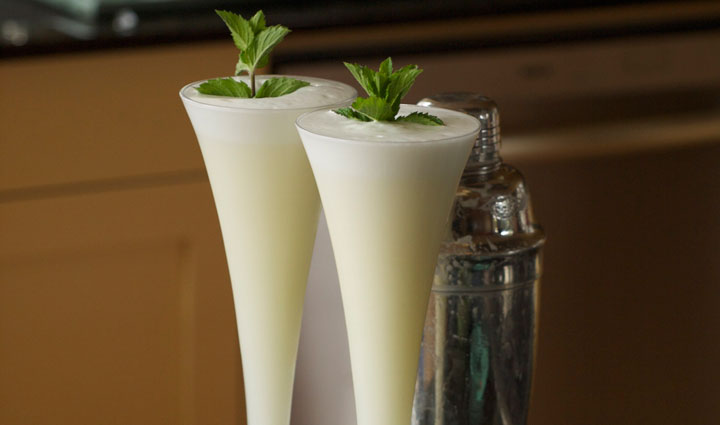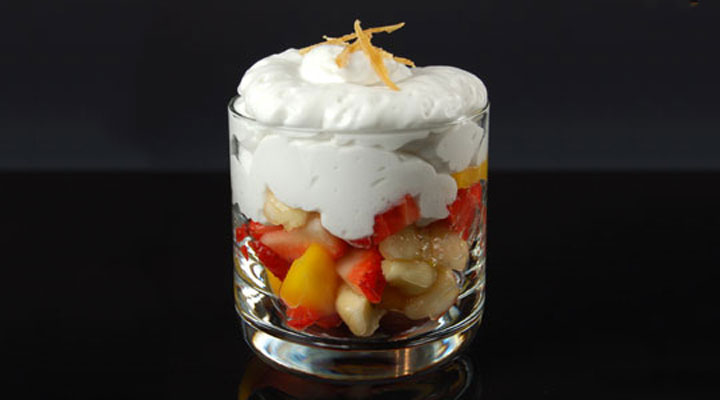Best Ingredients for Foams
Traditional Foams
We've already discussed how breads, cakes, and many other baked goods are all types of traditional foams. The other two most important ingredients in traditional foams are eggs and cream.
The proteins naturally occurring in milk and cream act as emulsifiers. They are what allow the fat and water parts of milk to stay combined and they also facilitate the emulsification of air into the mix. To create whipped cream, you can use an iSi whipper, or you can simply beat the cream with a whisk until soft peaks form.

[image: Steven Depolo]
Eggs also naturally help foams form. Egg whites contain a complex network of proteins that serve as emulsifiers. Egg yolk adds the powerful emulsifier lecithin to the mix as well. Egg yolks are used in the traditional foam-based dessert Sabayon as well as in drinks. For example, flip cocktails contain whole egg whites, while fizz drinks usually call for an egg white that is then foamed with carbon dioxide.
[image: Michael Korcuska]
Modernist Foams
Any modernist thickener, such as xanthan gum, guar gum, or locust bean gum will allow a foam to form. That's because thickeners slow the rate at which foams dissipate. Even water will form bubbles if you shake it enough with air. The bubbles just dissipate rapidly. However, thickeners only help to stabilize foams and will not allow you to create a truly stable foam. To do that, you need an emulsifier.
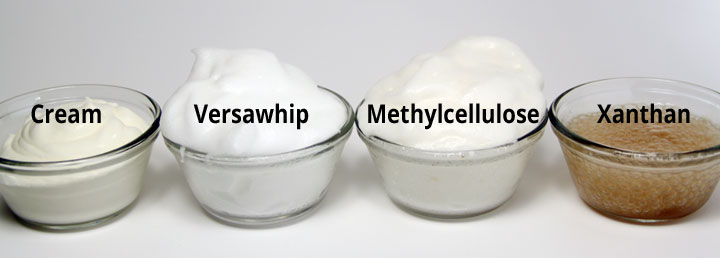
Of the molecular gastronomy ingredients we've tried to recreate a desirable foam texture, our favorites are Versawhip and Methycellulose. Both products create foams very easily (all you have to do is mix with a whisk or immersion blender) and do not suffer from the risk of overmixing, as cream does. Both also foam much lighter foams than a traditional cream does. To create a more luxurious texture, we recommend first thickening the liquid portion of the foam with xanthan gum. As the above picture shows, a foam can be created using xanthan gum alone, but foaming agents help to create a light and fluffy texture.
Gelling agents can also be used to create dense foams, but only when the agent used stays set at serving temperature.
For example, in this recipe for coconut foam with fruit salad and ginger, gelatin is used to produce a coconut foam. But, this technique only works because the gelatin is first refrigerated. Other gelling agents like agar should also work for this technique at warmer temperatures.
Lecithin is a special ingredient because it is a pure emulsifier---that is, it allows the formation of foam without adding any additional thickness to the recipe. To create an air using lecithin, we simply mix lecithin with a flavored liquid, mix with an immersion blender, then carefully scoop the bubbles from the top of the container.
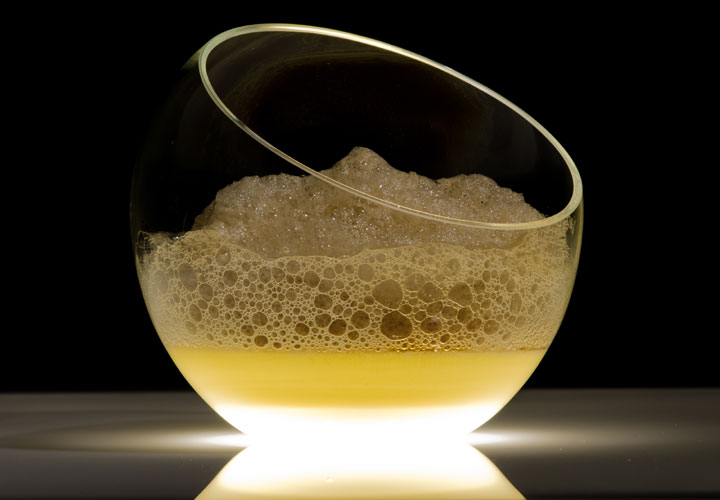
Glycerin flakes (actually monoglyceride emulsifiers), are special emulsifiers used to create foams when the primary liquid ingredient is oil-based. In this simple recipe for olive oil foam, we combine extra virgin olive oil, glycerin flakes, and salt, then dispense the foam with an iSi whipper. Simple but delicious.
In the below Sous Vide Egg Yolk Croquette with Gruyere Foam, the unique texture of the foamed Gruyere is created with a combination of xanthan gum (a thickener) and iota carrageenan (which aids in both gelling and thickening).
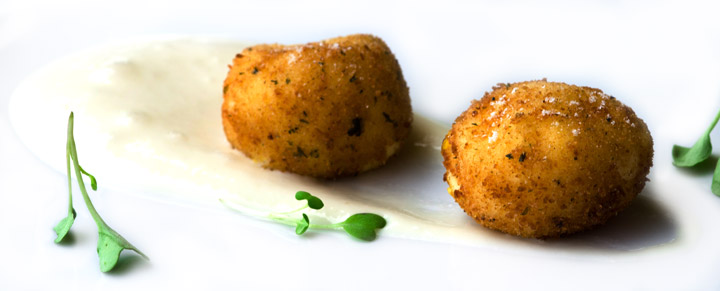
Mixing Modernist with Traditional Ingredients
Some of the best foams we've tried use a small amount of modernist ingredients to completely change the texture or presentation of traditional egg and cream foams.
In this Apple Caviar with Banana Foam, we stabilize a foam made with heavy cream and milk by adding a small amount of gelatin.
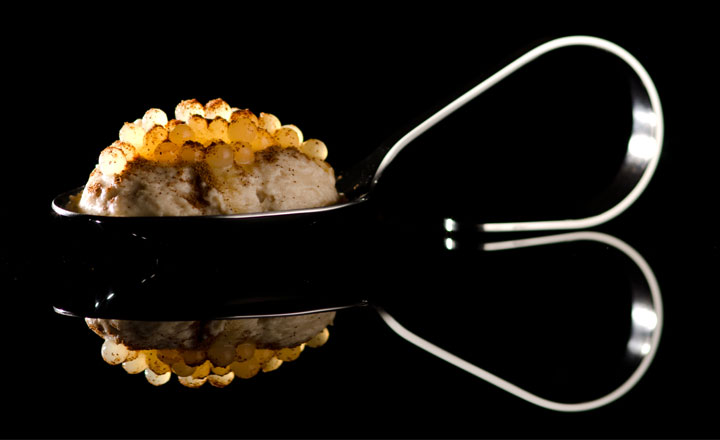
And although we've already talked about using lecithin to create airs, a combination of other ingredients can produce a similar, long-lasting effect. In the below recipe for Lychee Bubbles Filled with Sage Vapor on Oysters we use the fish tank bubble technique to create large, airy bubbles thickened with xanthan gum and stabilized with egg white powder. Neither ingredient alone can achieve bubbles as light and airy as with the two ingredients combined.

By Kevin Liu





